|
I've got a little pack of Flower Essence cards made by the Findhorn Foundation. Each one has a picture of a plant, the plant’s name, a quality that this plant evokes and a sentence affirming this quality. I pick a card a day or whenever I need to and a life affirming quality comes into focus for me. Today I picked GORSE – Joy – I live my life with joy and passion. Other cards show that GARDEN PEA is associated with Expression, HAZEL is associated with Freedom and SPOTTED ORCHID is associated with Creativity. For me, there is a resonance between the qualities shared in the Findhorn Flower Essence system and the ‘human needs’ that Marshall Rosenberg catalogued as he went about creating Nonviolent Communication. As we get deeper and deeper into chaos, polarization, confusion and inequality on a societal level, these qualities - through whatever system or modality that is harnessing them - are touchstones or guiding inner resources that I absolutely know the felt sense of because I will have experienced each of them at some point in my life. I can actively recall these experiences in order to reconnect to the quality right now. This supports me, when on one level, I am faced with overwhelm and a sense of powerlessness about the state of the world. Holding awareness of these qualities gives me an anchor, a resource, some relief and a little bit of juice to move forward. I bring focus to this similarity between the list of Needs in the Nonviolent Communication system and the Qualities in the Findhorn Flower Essence system because I’m very interested in the places where different traditions meet. I imagine that someone who might have never heard of Nonviolent Communication might see this connection and feel a spark of opening towards it; similarly someone who might have never heard of the Findhorn flower essence system, might suddenly feel a resonance with this earth-connected spiritual system. Both systems have a fundamentally spiritual basis. Here is a link to the Findhorn Flower Essences website Here is a link to NVC UK website where you can get Feelings and Needs cards Here are the Human needs outlined in the modality of Nonviolent Communication (NVC)
0 Comments
“The simplicity of the approach is the most important thing. The message for me is that I can stay with the grief and I need it to be seen but I do not necessarily need “the therapists” and two years one to one sessions of talking with psychotherapist.;-)
Walk Participant, May 2015 * “Thank you for doing it and for the trust that we can deal with it, stay with it by simply walking.” Walk Participant, May 2015 * “Thank you for the experience of the walk.I liked all of the information you gave us about communication. It felt a lovely, supportive environment.” Walk Participant, June 2015 * “It felt special to be sharing whilst walking, whilst out in nature.I can honestly say that your walk was a significant element of a weekend that made me feel I had helped myself shift psychologically.It felt a truly meaningful thing to do.” Walk Participant, June 2015 “Since the Walk, I think something has shifted in me. It’s as though there is now the possibility of not having to automatically burying painful emotions. It like it’s OK to feel loss or sad (now) about a friend who is seriously ill. Facing this is new and it feels honest. Thank you so much, for opening up this possibility for change. It’s the very best of learning.” Walk Participant, June 2015 * “Thank you for Wednesday’s Walk. What you say does sink in and it has helped me this week. I thought you facilitated the session with a light touch and very skilfully and that’s what made it possible to share our thoughts and emotions. Being outside, having tea, walking, coming together under the tree………………….. provided a lovely calm setting that balanced well with the openness of our conversations with you and each other. Once again thank you for providing this community event.” Walk Participant, September 2015 * “I actually came away from the Grief walk quite stunned by its power. It was an unexpectedly beautiful day in terms of the weather…….for me, the walking round in a threesome really worked……it was very powerful to listen to people’s stories and I did genuinely feel heard from the quality of the thoughtful responses I received. A theme in our separate threads was identified and that was very helpful…it wove them together!!! It had seemed really important to me to go on the walk, it was exactly what I needed.” Warm Wishes, October 2015 Walk Participant * “I’d never given ‘grief’ substance before now. The emotion itself. Awakening unspoken agonies long ago dulled by grief, yet always latent and from time to time touching your soul and yearning for a moment to express. Today’s walk did that. Sharing made the turmoil less tumultuous. Thank you Ceri and our cosy group – it felt so natural.” L Johnson, November 2015 * Conflict is feedback that hasn’t happened. How many times have you noticed an unease inside of you about something that is happening that you don’t want to be part of, or something that someone is doing that you don’t like, or something that you are being expected to do? This is happening all the time on a micro level in interpersonal relationships, at work and on a bigger scale in our shared reality of living in this city together, in this country, on this planet. Things are happening that we don’t like, and we very often don’t even acknowledge this to ourselves, let alone speak up about what is happening, let alone find support to collectively transform the situation. One of the skills needed is the capacity to give and receive feedback. The parts of this skill include having compassionate understanding of:
This 12 hour Foundation training will give you a solid overview of the tools of Nonviolent Communication that support giving and receiving feedback, speaking truth, self-care and compassion. This workshop will transform your potential for speaking your truth. Book here. What is Nonviolent Communication? And this series of workshops Cultivating the Strength to Love? Nonviolent communication (NVC) is a process, skill and consciousness which can be learned. NVC strengthens practices of:
The African American Bishop Curry transformed the energy of the Royal Wedding with his sermon. He flagged up what "The Rev Martin Luther King said, We must discover the power of love, the redemptive power of love. Love is the only way. There is power in love. Don’t underestimate it." Cultivating the Strength to Love is about learning how to cultivate love for self, others, community and the world. The Strength to Love is one of Dr Martin Luther King's most famous sermons and this training is designed to help you cultivate this power of love. I evoke the memory of Dr Martin Luther King with care. As a white person, I want to be aware of the tendency of white people to appropriate words (and resources) carelessly. I don’t want to be appropriating his words without also integrating the vastness of his vision and practice around racial justice; something he lost his life for. So far in this series Cultivating the Strength to Love (NVC Foundation Trainings) we have looked at Authentic Relationships and the systematic blocks to authenticity and ways we can transform these with different structures, acknowledgments and practices. We have looked at Choice, Consent and Creativity and how the practice of NVC can begin the generative cycle of empathy and choice, alongside support and collaboration so we can tackle larger systemic challenges. Why these themes? I know that I’m caught in a ‘cycle of violence’ when I get scared, confused or stuck. We don’t exist in a vacuum, so the systemic cycles of violence appear in our personal lives insidiously as we go about our daily interactions. Very often, if we have more privilege we are blind to them, or if we have less privilege, we are numb, angry or relentlessly caught up in the violence of them. This is what Marshall Rosenberg, who built on the nonviolence of Dr Martin Luther King and Gandhi, called ‘Domination culture’, and since the time that Rosenberg was writing and attending to social change, we have even more understanding about trauma responses and about systems thinking for social change. “If you are not aware of how you are part of the problem, you can’t be part of the solution.” David Peter Stroh And about money ... I work in a creative way with money ... pay what you can and what meets your needs. People pay what they can, considering their needs and mine. Some people pay more. Some people pay nothing. It's a fascinating journey towards a needs-based approach to money. And I like working with different levels of experience so while this is a foundation training, I welcome people who have more experience in NVC. In the course of my training in NVC, I repeatedly attended and assisted on Foundation trainings, where I revisited again and again the foundations of nonviolence. As paradigm shifts or changes in habits and patterns take a long time to take root, the repeated practice was very important to create change. Come and join me for 2 days of learning and connection. Book here If you haven’t encountered NVC before, have a look at these 4 pages of Information Or what Marshall Rosenberg https://www.youtube.com/watch?v=O4tUVqsjQ2I NVC Training course with MR 9 hr vid https://www.youtube.com/watch?v=UEqmZ2E1o64 The purpose of NVC (3 hr) A=Allow and accept what you are hearing and how it is being expressed (unless you really can’t, see below). B= Boundaries. Use a Time Boundary. Use reflecting back Feelings and Needs as a structure. C=Connection. Use your Resonant Warmth and Generosity so that the other person really feels your humanity radiating towards them. Empathy is not mechanical. ABC of Empathic Listening (more detailed guidelines) A=Allow and accept what you are hearing and how it is being expressed. If someone is stuck, you are not trying to ‘unstick’ them. Try and connect to the relief of not trying to fix anyone. A is for Acceptance, not for Action (although Action comes, and there may be times when you cannot ‘accept’ what you are hearing) B= Boundaries. Empathic listening is a very boundaried practice.
C=Connection. Use your Resonant Warmth and Generosity so that the other person really feels your humanity radiating towards them. Empathy is not mechanical. If you can’t be in this resonant space of warmth and generosity. Stop, acknowledge you don’t have capacity. Go and do something lovely for yourself. Remember, when people are offloading with a lot of energy, this is because they have a very deep, strong need to be heard on something. This need may be chronic and urgent. The aim of Empathy injection to share the ‘tools of empathy’. It’s very confusing in the media and scientific research what Empathy even is. Some researchers talk about Cognitive empathy (ability to imagine what life might be like for someone) and Affective empathy (ability to feel what the other person is feeling) I draw on the Nonviolent Communication understanding of empathy; empathy is allowing space for the other person to feel what they are feeling, so they can get clarity, so they make changes to improve things. Some people take on feelings and experiences of other people very easily, that is not the aim of this kind of Empathy. If that happens to you, make sure you hold yourself, imagine a protecting power holding your back so that whatever comes in, can go out again. You could also say to yourself as you listen to someone else “I take what is mine and leave what is yours.” Often we don’t know what we are feeling, we don’t know what we are needing. It takes some reflection to discover this. It’s really like holding up a mirror to what the person is saying. “I’m hearing you say this …”. It’s important to be aware of interpretations and your own feelings. Don’t reflect back “I’m hearing you say (this) and (this) is your own stuff/interpretations/feelings” It’s very important that the spotlight of an empathic conversation is on one person, rather than bouncing about all over the place as it does in regular conversations, which results in not much listening really happening, just a lot of talking in the vague hope of being heard. Agreeing to talk for a limited amount of time each might seem a bit artificial and controlling, but this time boundary can be very supportive in having an effective conversation with more listening happening. Active listening can be very demanding so you can’t do this for hours on end! Agreeing to listen to someone with intent for 10 or 15 mins can be hugely effective in getting to the bottom of an issue. (See my ABC of Empathic Listening for more on Allowing, Boundaries and Connection when listening) How to practice Reflective listening: (To listen without own thoughts and feelings getting in the way of the speaker’s important process of self-discovery) I’m hearing you say … What I heard you say is … Do not skimp on the Reflective listening. How to utilise the Boundary of feelings and needs: Use the energy of curiosity to guess, rather than say the following in a ‘diagnostic’ way. Are you feeling upset because you’re needing communication and respect? (to get out of the habit of linking your feelings with whatever someone has or hasn’t done eg “I’m feeling upset because you didn’t call.”) How to give Feedback to someone when you are listening to them: When someone talks to you, things gets triggered and stimulated for you, usually as positive or negative judgements. This is real, unavoidable, and there could well be important information in this for the person speaking. Always ask permission before you give feedback, ask a question or share something from you. “Something’s coming for me and I’m wondering if you are open to hearing it?” “I’m telling myself you’re probably not gonna like this, would you still like to hear it?” Asking permission gives the person a little bit of time to prepare themselves to hear. Feedback phrases:
Always follow feedback with this question “What happens to you when you hear that?” There will then be more opportunity for Reflective listening and Feelings and Needs guesses because other stuff will come up. I acknowledge Maria Arpa’s work around Giving Feedback. Maria does excellent 3 day trainings in her application of Nonviolent Communication which she calls the Dialogue Road Map. https://www.centreforpeacefulsolutions.org/ Over the summer, I was sitting by the side of the boating pond in Greenwich park. My son and a friend were happily pedalling in their boat and my attention was drawn to another boat with 5 children in it between the ages of 7 and 11. There was also an older group of teenage boys on the side of the pond opposite me, who were throwing green pond slime at this boat of children, who were beginning to raise their voices and squeal a little in response to this. I noticed the voices in my head that stopped me from stepping in “Who am I say anything? These children must have adults around here. There are also the young men running the boats, why aren’t they doing anything? The bigger kids are just playing ... it’s a bit of boisterous, roughhousing play.” I know what I could have said, that’s the fairly easy part. I could have checked with the children on the boat if they were enjoying this game? And if I’d got a “No!”, I could have shouted at the bigger kids “The children in the boat are not happy with this game. And I want everyone to enjoy themselves and play safely. Can you stop throwing slime?” And if it needed more, I could have brought myself and the context in more “I feel anxious watching this, I’m worried that someone could end up splatted with slime, or even fall off the boat. I want everyone to be enjoying their time around this lake.” The thing was I didn’t say anything. So why didn’t I? It seems that I didn’t have clarity about my role in this situation. In a world that wants to separate us from each other, neighbour from neighbour, country from country, continent from continent, somehow I have bought into that story that “It’s not my place. There is someone else whose role this is.” But it was me who saw the children on the boat. I was an observer; actually I was the only aware person there. Isn’t that reason enough to speak? Suddenly, I see that I could have slipped into the role of ‘guardian’ temporarily. Those children could have experienced an advocate who clearly was seeing them, and who cared to speak up for them. I can see that I was believing society’s prescription around separation of role and that only people with the correct authority to intervene can do so. I’m wondering if, to debunk this myth, I can hold and cultivate the consciousness of what I most clearly am (aware, caring, observing) with a higher level of value than what society ascribes to this (interfering? nosy? domineering?) I will see if it encourages me to move in direction of stepping in, without me employing ‘should’ and ‘have to’ to motivate myself, which is what I’ve been employing in my life until now, without much efficacy. *** I acknowledge the empathic support of Show (Shougen Horoiwa)in helping me get clarity around this, which is another form of nonviolent input in my life. Written for the Blogging Carnival for Nonviolence 2016 http://www.instantblogsubscribers.com/entry/Zhana21/287256/The+Blogging+Carnival+for+Nonviolence+2016 Demobilising the hatred
The carnage from Orlando is still sinking in and I am still resonating with the search within me of how the bigger picture could look as we walk towards greater peace, and yesterday Jo Cox MP was killed, and I send waves of grounded and holding love and kindness to her husband, her family, her community as they reel in the shock of this horrific death, sending peace to Jo as she moves on and thanks for all her work for her and our community and country. And I hear on the radio “We have to fight against the hate that killed Jo Cox” and I question this ‘fighting’ and I question this ‘against’, in the context of how I am receiving and investigating Rabbi Michael Lerner’s article. I will follow this up with more writing on what it takes to ‘empathise with the enemy’ and what I imagine to be the resources and support needed to do so (don’t do it alone ….) Snippets from Rabbi Michael Lerner’s (RML) response to the Orlando Massacre. (Full article here http://www.tikkun.org/nextgen/grieving-for-orlando-for-glbtq-for-muslims-for-america) My comments added.(CB) RML:We will not let any sector of “us” get scared that the rest of us will abandon them. Just as I said at Muhammed Ali’s funeral that Jews will stand with Muslims in the face of growing Islamophobia (all the more needed now that some politicians are trying to use the horror of the mass murder of members of the LGBTQ community in Orlando by a supposedly Muslim young man to justify repression against Muslims). We will not let any of them become an “acceptable” target for the haters. Not the LGBTQ community, not anyone. “We are one global “we,” and we must never let any part of us become the target that is somehow made a “legitimate” target.” CB: WHAT DOES THIS LOOK LIKE … TO NOT LET THIS HAPPEN?, that we observe when a community or group or individual is being isolated and step towards them …? RML:“But true solidarity needs to go beyond standing with the victims of hate crimes, including, homophobia, Islamophobia, racism, anti-Semitism, sexism, xenophobia and all the other variants of hatred. True solidarity should guide us to the imperative to develop strategies to heal the distortions and pains that lead people into communities of hate.” CB: HOW DO WE HEAL THE DISTORTIONS THAT LEAD PEOPLE INTO COMMUNITIES OF HATE? Does this involve looking at the needs people are meeting when they step into a community of hate …. Belonging, community, acceptance … and then consider how we catch their attention to attract them out of that community .. possibly with … belonging, community, acceptance of the humanity of the person, even if we do not accept the actions this person is involved in. “Our strategies must separate the hateful behavior from the pain in people that underlies their misdirected rage, and sometimes violent actions. We must develop ways to speak to those deep psychic wounds and hurts, and show people that there are better and more effective strategies to deal with those pains than to act them out on others, whether that acting out be in the form of demeaning, raping, making war against others, or in the form of mass politics of hatred.” CB: HOW DO WE SPEAK TO THE DEEP PSYCHIC WOUNDS AND HURTS? Do we commit to witnessing and acknowledging the deep psychic wounds and hurts a person involved in hate communities and actions has experienced? How do we gain the trust of these people in the first place? In my exploration of Empathy, I witness empathy as being equated with being ‘Nice’ yet, empathy, the physical manifestation of the state of compassion is not about being nice. It is possible to exercise empathy when tussling with extreme internal fear. Empathy is seen as being ineffective and I guess we have not practiced enough, as a human species, a radical form of empathy that includes those who are radically other to us or who do things we think are dangerous or whose actions harm us. Within Nonviolent Communication (NVC) the practice that informs my approach to empathy, there is a strategy for empathizing with the enemy, called Dissolving Enemy Images. Here is my version of the practice. Transforming judgements and enemy images
I must admit, I quite enjoyed Celia Brooks’ description of me. It was at the beginning of our collaboration at the Demo Kitchen at Borough Market on Friday 27th May 2016, when she was cooking up some wild food I had found locally. We were both in conversation about the ingredients and how to cook them and she introduced me to the gathering crowd as ‘a Mistress of Wild Food’. Whenever I receive the label ‘Expert’ in wild food, I have to say I’m not. Because I really am not. There’s so much I don’t know, I don’t know latin names, if you can’t eat it, I don’ t know it. I really know my 30-40 plants and that’s about it. I’ve always said on the Invisible Food foraging project that I share my learning, not my knowledge …. I want to learn something … want to come too? After publishing and spreading the word about my book Street Food: Urban Foraging and World Food in 2013/14, I thought my time on this project was almost up, as I wanted to dedicate time to working with Communication, conflict and mediation, but this year I have been asked to do a few walks and feasts (At Soundcamp and at Borough Market) and I so completely enjoyed them both, that I remembered why I spent 6 years working full time on this project. So these are, once again, 5 reasons I love Urban Foraging.
Having recounted all of that, I still don’t know why the word ‘Mistress’ made me stop momentarily, I don’t know why the word ‘Mistress’ seems to fit, when the word expert absolutely doesn’t. Maybe it’s something to do with ‘letting myself go’ with the plants … a convergence … a surrender … a union …? . How Celia Brooks knew all of that is also a wonder. But I’m happy that, after 8 years of urban foraging, the blackberries are still there to lose myself in. (Well … mid July I reckon, this year, in London)
|
Authorby Ceri Buckmaster Archives
February 2023
Categories |
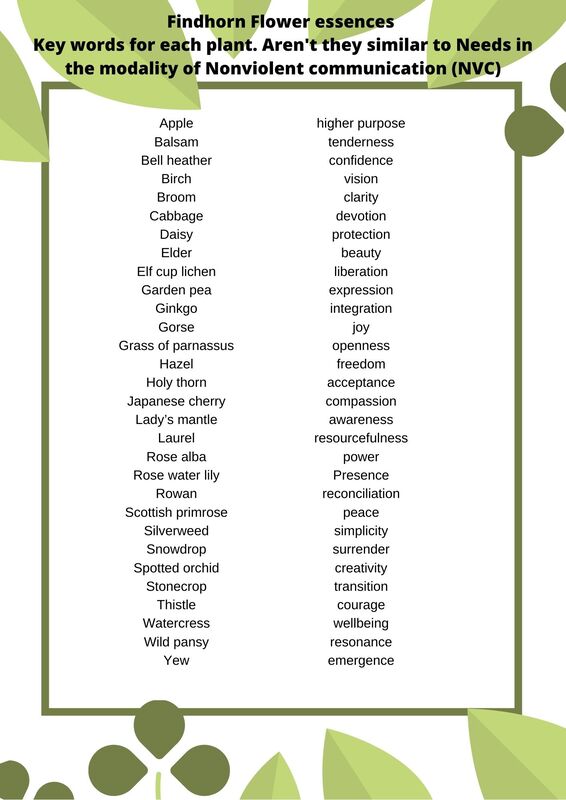
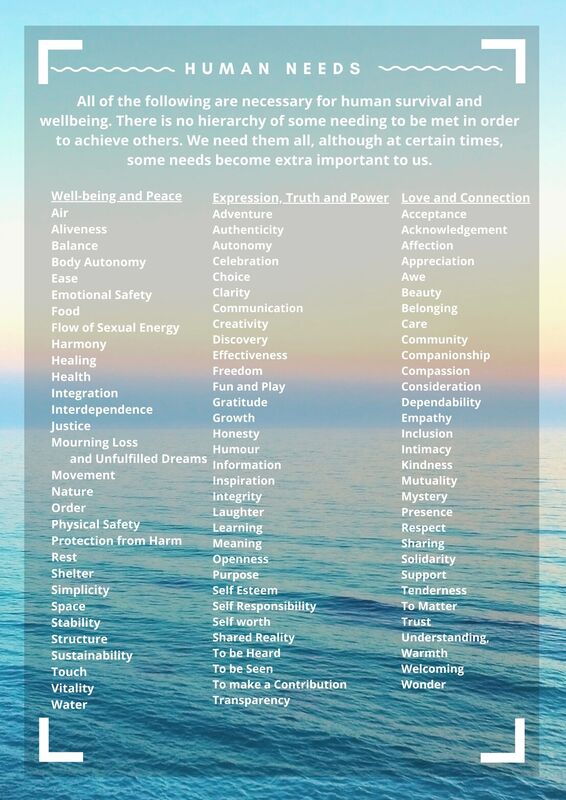
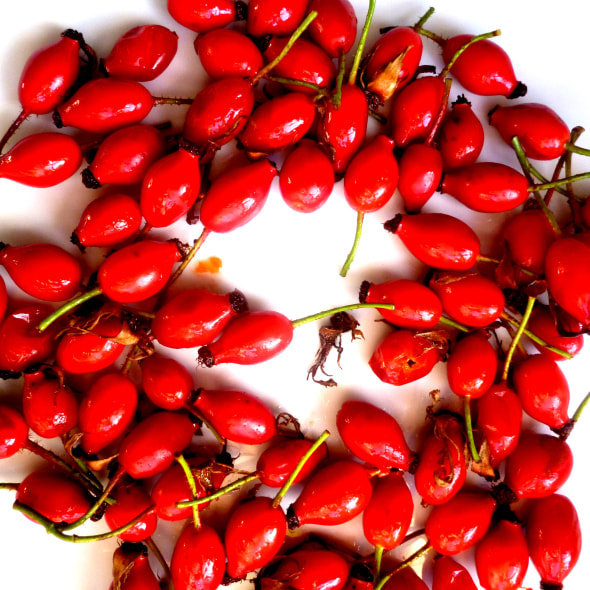
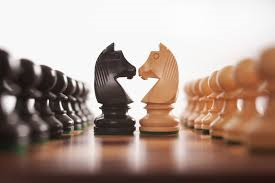
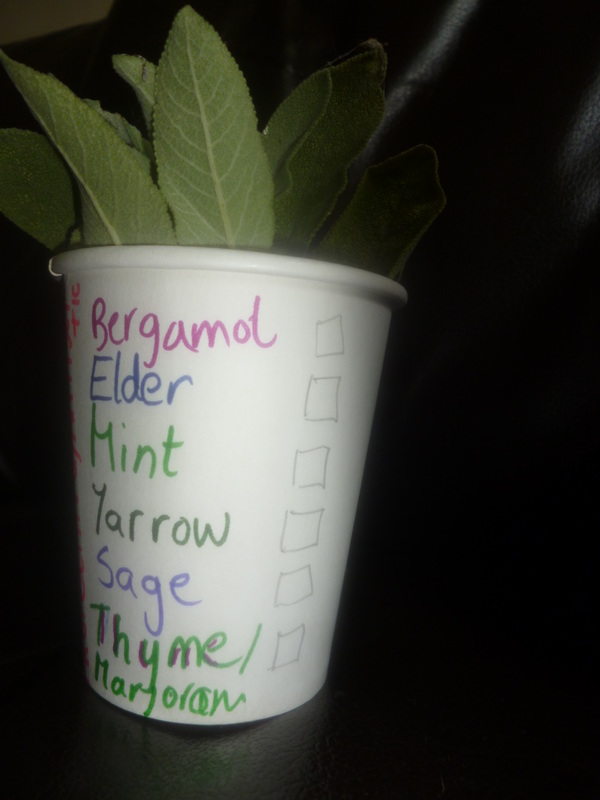
 RSS Feed
RSS Feed
